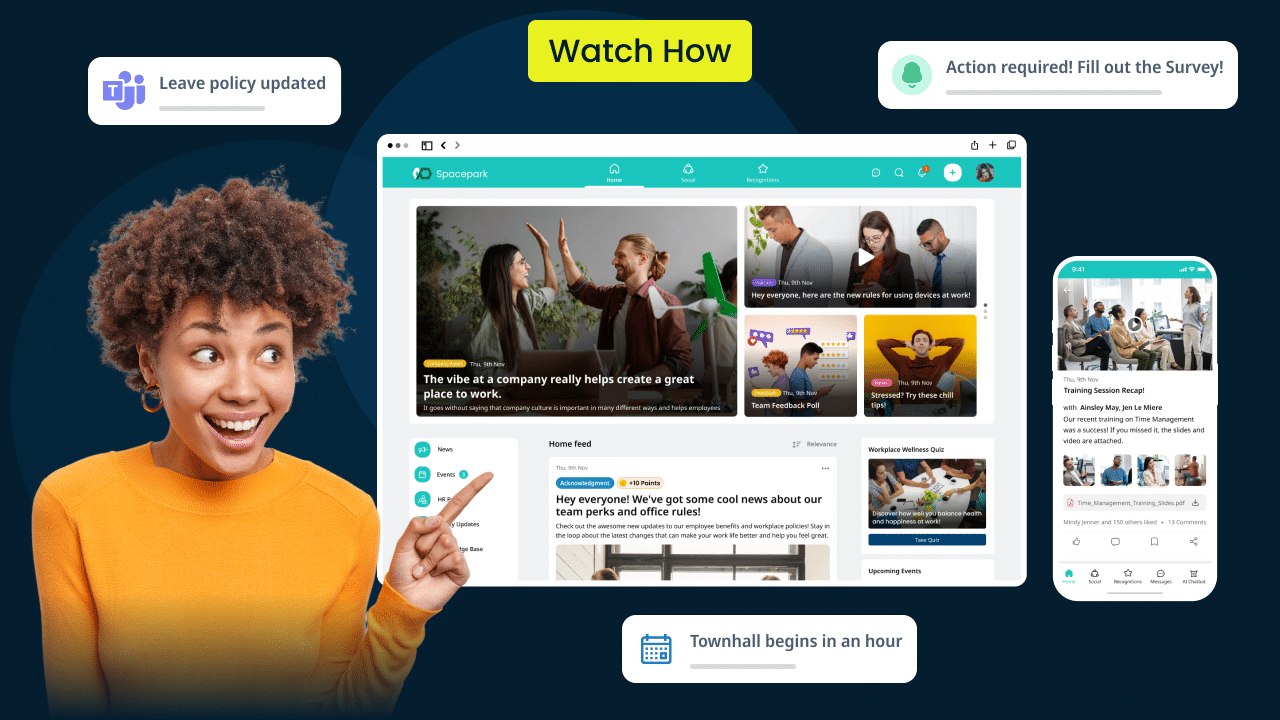Effective communication is crucial in today’s highly competitive business world. Whether employees are working remotely, on-site, or using a hybrid model the seamless communication is vital for ensuring productivity and satisfaction. Software for business communication is essential in this regards. Investments in internal communication software will help to reduce confusion in the workplace and create a culture that values transparency, collaboration, inclusion and teamwork.
If you are still using old email, chat apps that don’t function, or channels for communication which are a mess It’s the time to look at modern platforms for internal communications. These can help improve your communication and help you align the workforce.

Image credit: hubengage.com
The reason why businesses require advanced communication Tools
It’s been a long time since bulletin boards and emails were the only means to communicate with employees. Today, businesses live in a time of instant messaging, real-time collaboration and online workplaces. Without the right internal communication tools, organizations are susceptible to miscommunication loss of engagement, as well as decreased effectiveness.
1. Inspiring employees to be more motivated
In the current workplace, keeping employees engaged and motivated is a big problem. Software for internal communication that is well structured will ensure that every employee regardless of location feel valued and respected. Features like:
Real-time announcements.
Interactive feedback polls.
Recognition programs for employees.
Communication platforms that are mobile-friendly
Help businesses develop a sense of community among employees, resulting in higher levels of satisfaction and increased productivity.
2. Reduce confusion at work and improve the clarity of work
When employees don’t receive clear communication, misunderstandings happen. This leads to late deadlines to work, anger and duplication of efforts. Business communication software offers:
Centralized information sharing Employees have access to documents, updates, and resources from one central location.
Use task & tools for managing projects to ensure that everyone is aware of the purpose of their work and what they are doing.
Workflows run more efficiently – This can reduce bottlenecks so that projects run smoothly.
When organizations implement well-organized platforms for internal communication, they find that employees have more confidence and productivity.
3. Transparency & Strengthening Company Cultural
Communication and trust are key to an effective company culture. Employees who are informed about the company’s objectives, updates and developments are more likely to remain engaged.
Modern tools for internal communication offer options like:
Leadership video messages Direct messages by managers to employees.
Town halls with employees and Q&A sessions – encourage two-way communication.
Recognizing employees’ dedication to their work with recognition and appreciation programs.
By encouraging an open and honest dialogue, businesses can reduce employee turnover and build a loyal workforce.
4. Supporting Remote & Hybrid Work Models
The traditional methods of communication are no longer sufficient as businesses increasingly use hybrid and remote working configurations. Teams need instant access to files, meetings and chats no matter where they are working.
Cloud-based communication software can be used to:
Collaboration is possible across time zones.
Document sharing is made simple, as well as co-editing in real time.
Integration with videoconferencing for virtual meetings.
Apps that are mobile-friendly for communications on the go.
Companies that utilize technology for communication to remote teams are more productive and collaborated than those who still rely on traditional communication methods.
5. Improvements to Crisis Management & Business Continuity
Emergencies can strike at any moment, whether they pose an attack on cybersecurity, a disruption in the market or a reorganization of your company. Using a robust communication software for business will ensure that your employees get actual updates along with safety guidelines and directions during an emergency.
Modern internal communication tools provide:
Push notifications instantly for critical alerts
Automated workflows for messaging to help employees through crisis situations
Centralized knowledge bases with emergency protocols
A well-planned company can limit disruption, improve productivity, and make sure employees are informed about any unexpected events.
The Future of Internal Communication Software
As technology evolves and the requirements increase, so too do the demands of software for business communications. AI-powered communication platforms provide businesses with an advantages through automation of repetitive tasks, analysis of employee engagement data and personalization communication strategies.
The most recent trends include:
AI chatbots are able to provide instant assistance to employees
Analysis of sentiment to assess workplace morale.
Interactive dashboards offer real-time analytics on communications.
Businesses can boost efficiency and teamwork with the help of an intuitive, intelligent software system.
Final Thoughts on Choosing the Right Internal Communication Platform
If your company is still struggling with miscommunication, disengaged employees, or disconnected workflows, it may be time to upgrade your internal communication tools. Business communication software transforms your workplace from a place that is a source of miscommunication and disengagement into one that is centered on collaboration with transparency, engagement and teamwork.
For companies that wish to compete, keep the top employees and foster a lively workplace culture, investing in modern internal communication software has become a necessity.
Are you searching for the best platform for internal communications in your business? Consider options that offer instant messages, mobile access and leadership engagement.

